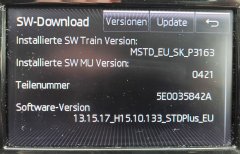Leaderboard
Popular Content
Showing content with the highest reputation on 03/03/24 in all areas
-
5 points
-
Wow, who'd've thought they would find another way to make the CR1.6 engine go wrong?4 points
-
4 points
-
4 points
-
3 points
-
Whenever you use aircon, humidity in the air that passes through the evaporator (the cooling element in the heating/ventilation) condenses and the condensate water should drain out though the bottom mounted condensate drain tube. How much water depends on the humidity in the air (outside or inside if on recirc setting) Not all water manages to drain for a variety of reasons, perhaps partly blocked drain or a build up of debris or fungis/bacteria or just hanging on the evaporator fins. So when you restart the car after previously using ac, its normal for humid air to come out of the vents and mist up the screen initially. Turning on the ac will dry the air (water going elsewhere) and clear the screen. Alternatively turn the blower up to dry the evaporator out, how long it takes depends on the amount of water still in the evaporator. A good habit is to turn a/c off a few minutes before you complete your drive but leave the blower on to dry out the evaporater before you turn off the engine. This will stop bacteria, fungus and bad smells developing due to stagnant water in the evaporator when the car is stood. It also stops the initial misting you get when starting.3 points
-
3 points
-
3 points
-
2 points
-
I have purchased a rea anti-roll bar, and also a pair of TT callipers, the car has recently had discs and pads all round and they feel very good, so I’m going to wait until they need replacing before upgrading.2 points
-
2 points
-
We are on the same boat. As a carburetor 1.3 owner like you, I did lots lots of search and brainstorming for increasing power without too much compromise and fit it in a budget. Fist of all, I agree with @nta16 about doing prerequisites on the car, before beginning engine work. For engine upgrade, one must think logical way which includes basic HP formula. Power (W) = Torque (N.m) ∙ Speed (rpm) / 9.5488 Maybe all of us heard that before, there are two important characteristics for an ICE. Torque and total power. But if you look at formula, to understand how the total power is calculated, it says: "How powerful can you rotate and how fast can you do it?" So, to increase total power, according to formula, we need either increase torque or have the engine capable of running faster. Or both. Now, lets analyze what we have first: These curves are our engines' characteristics. 135, 136 and 136X respectively. One must understand that, when ICEs are designed, everything is optimized for ideal running conditions for the meant purpose. Especially the rpm. This includes, cylinder configuration and dimension, burning chamber design, valve dimensions and numbers, detailed valve timing, intake and exhaust manifolds. Everything sums up to achieve the curves you see above. If you look carefully, you will notice that, an ICE is not very flexible about efficiency. For 135 and 136 engines the most efficient rpm is around 2500. With 136X it's around 3500rpm. 136X is the most sporty version from factory. It has different cam. While 135 and 136 have same cam but different compression ratios. Comparing the 135 and 136 curves, you can understand how increasing the compression effects engine characteristics. Comparing 136 and 136X shows, effects of cam modification. (Both 136 and 136X have same high compression) Increasing compression ratio is a no-brainer if you have a 135 engine. Which was meant for old times where high octane fuel not available everywhere. As you can see from the charts, increasing compression ratio does not change the general shape of the curves nor change the target operation rpm range a lot. But changing cam, basically shifts optimized rpm range! Engine is more efficient @3500 rather than 2500. Power is rated at 5500 instead of 5000. As you can see, when you speed up the engine beyond a level, it loses sync. Torque drops dramatically. That's because of fixed values like cam profile, valve timing etc. Because of losing torque at high rpms, turning the engine faster does not yield more total power. It's just fuel waste. If you read upon this point, now the question is, can we make the engine more efficient at higher rpms by changing cam, intake and exhaust modifications etc? The answer is yes but the more aggressive cams you use and the more you tune for higher rpms, the more you will lose low rpm idle capability. You end up getting a smooth idle at 1000rpm for example. Instead of 800. Thus, affecting drive-ability and fuel consumption in the city. How other cars can rev higher rpms? There are advanced technologies like variable cam profiles and variable valve timing devices. For example; Here comes the mighty Honda VTEC. https://en.wikipedia.org/wiki/Honda_Civic_Type_R Civic Type R EK9 With the engine B16B DOHC VTEC. 182HP @8200rpm 160nm @7500rpm From a 1.6L engine. One the highest output per liter engine ever built. VTEC adjusts valve timing on the fly, based on engine rpm. It's almost tuning itself based on your need. Marvelous isn't it? Second question is, can our engines withstand higher RPMs? For reliable long term operation, the simple answer is NO. Škoda 1.3 Engine is not designed for high rpms. First of all our engine has three main bearings. Instead of five. This helps saving fuel because of lower friction, but it's not good for high rpm stability. Our engine is not cross-flow. Limiting airflow speed in the engine. 8V OHV. Pushrod design. Good for durability but very bad for achieving high rpm. Beyond a level, all mechanical parts chained together in a pushrod system goes out of sync easily. There is a problem with oil pump worm gear lubrication happens at high rpm. Head gasket reliability is a concern on every modification for this engine. From my personal experience, sustained operation beyond 3500rpm accelerates valve clearance adjustment go off. You end up doing it more often. Here is my chain of thoughts about modification with pros, cons and hard walls. 1- 136X conversion. Adopting high comp pistons is OK. No problem. Just plug and play. Special cam needed. 136X cam is the same with pre-98 Felicia 136 MPI. From what I heard, it has different journal. It won't fit without modification. Special made cam needed. Where can I find cam profile data? Hard wall: Original 136X has a different distributor! With a different centrifugal advance setting! Very hard to replicate. If it's done correctly, you get 50KW. Instead of 46KW. (Compared to 136 engine) Worth it? (If I travel intercity, I usually go exactly at 3500rpm @ 5th gear. But, I don't go intercity everyday. Instead of that, I use the car in the city everyday between 2000-3000 ranges. So normal cam with 135 and 136 engines is more suited for city driving) 2- Weber DCOE conversion with custom intake manifold and reworked exhaust system. With lots of engine characteristics and tuning mentioned above, another important issue about engines is the drive-ability and usability. This includes cold starting and flawless operation in very cold weather. When you consider this, other important bits of the engine design comes into play. Standard carb. Jikov 28-30 LEKR, which is a Pierburg 2E3 clone has an automatic choke. I personally tried and tested. Even at -18ºC it can start the engine with one crank. Standard intake manifold has coolant supply and placed very closely to the exhaust manifold. You will lose all of this with Weber DCOE. I know DCOE has its own cold start mechanisms but I don't know if they are as effective as the standard setup of our cars. It's a race carburetor and race teams start and heat their engines before the race. Heated intake manifold helps the gasoline evaporate and mix better with the air. Other than that, weber DCOE and custom intake manifold conversion is common with small volume engines. One can find many samples through VW Golf Mk.1/2 forums. Extensive data can be found about choosing right carburetor dimensions and jets. For example: https://www.carbparts.eu/calculator Chinese clones of DCOE are available for very low prices too. In the end, intake manifold and exhaust system must be done with precise calculations. At the end of building the system, final adjustments of the carburetor(s) must be done with Dyno runs. Like I wrote before, DCOE conversion is only done for increasing air-flow efficiency. We can't increase the engine speed too much. In the era of carbs. very few cars had side-draft carbs installed from factory. Here is a fine example: Alfa Romeo Giulietta from 1954 https://en.wikipedia.org/wiki/Alfa_Romeo_Giulietta_(1954) It has the same 1.3 engine configured with different compression ratios and different types of carbs. See the engine variations in the wiki page. This is a twincam engine. VERY advanced for its time. 3- Bike carbs. conversion. Needs custom intake manifold like DCOE conversion described above. For our engine, I think Honda CBR 600 carb. is suitable. I couldn't find anyone who did that for our engine. So anyone who attempts to make this happen will be doing the honors of discovering all the tuning needs, pros and cons. Fuel pressure regulation, lots of jet adjustments and Dyno runs needed. I don't know how it idles or cold starts. Just like DCOE conversion, this is done for increasing air-flow efficiency. 3- Forced induction We can't increase max rpm so how about increasing the torque? 3a- Turbo First of all, with a head gasket reliability problem engine, increasing the cylinder pressure is not a good idea. But if we use low comp piston set and keep the pressure very limited we may have a chance. Even if you do all the welding and piping work of turbo, the hard wall here is; carburetor itself. Even at stock, Pierburg 2E3 is very sensitive. It is not compatible to force feeding. Force feeding capable specially built carbs are available in US. But they are for their huge V8 engines. Not suitable for our cars. Theoretically you need a pressure chamber built around the carb. with controlled fuel pressure. Imagine how it would be to tune the jets inside the carb. Also turbo is good for higher rpms. Not good for our engine. We need pressure at low down 2000-3500 range. 3b- Supercharger This is more suitable for our engine. It will provide steady pressure at low rpms but same handicaps applies here too as with the turbo. Having carb. makes the project almost impossible. There are small and cheap superchargers on the market by the way. But don't forget, you have to install intercooler too. To wrap it all, all forced induction solutions are actually easier if you convert to custom ECU and MPI. That means buying the custom ECU, all the sensors it needs, replacing flywheel with position sensor compatible one and installing all required sensors, including lambda accordingly. After building the forced induction system, an expert ECU programmer engineer who works with Dyno is needed. To prevent the engine to blow. Correct ECU programming is critical. If you don't know someone who can program an ecu from ground, with little to no previous data, don't attempt this project. What is the most you can get without compromising too much reliability? Between 80-90Hp I think. Calculating all the costs of the project, does it worth it? I don't think so. Here is something for you from my info cache: http://www.mm.pl/~miazio/HistoriaTurbo.pdf The author did this for a school project or something like that. It includes many details about the nature of the job. He used a Garrett GT15 from an Astra 1.7TD. The car has custom ECU. He is not declaring power as a solid data. He doesn't have intercooler or blow-off valve. ------ GEARBOX!!! ----- Let's don't forget about the gearbox. It plays a great role in fuel efficiency and drive-ability. Gearbox ratios are chosen based on engine torque, speed and vehicle weight. Basically, gearbox must match the engine curves above. Any modification you do, you may end up with gearbox not matching the end result. You may be happy with very short gears and very fast acceleration in each gear but it will drink fuel. Up to this point, what I learned, engines are designed from ground to achieve a specific workload scenario. Tuning further is all about exploiting the leftover potential. IF there is any in a particular engine. For our engine, it is designed to achieve city based drive-ability in mind with maximum fuel efficiency and minimum build cost. We can't drift away the engine from it's fundamental purpose a lot. It doesn't have a lot of potential. So what can be done? When browsing Czech sources, I learned that there was a company who built custom made liner and pistons to increase the volume of the engine reliably. Nothing beats volume right? If I remember correctly, they increased to even 1.6. If they are still operational a trip to Czech Republic is needed. With correct jets our standard carbs can run on 1.6 too. Other than that, my personal advise is making mild modifications without altering the base engineering of the engine too much. If you had the MPI from the beginning, I'd advise what @D.FYLAKTOS did. Small modifications to the chip. With custom exhaust. I think he had 70-75HP. Best of both worlds. Close to stock, yet more powerful. @Thefeliciahacker can calculate exhaust dimensions too. 4- 135 to 136 conversion If you have 135 engine DO IT! The cheapest and easiest of all modifications for carb 1.3 Škoda. This engine had been engineered for 9.7 compression ratio. The low comp(8.8) pistons are for being able to use poor quality gasoline. Which is not a case anymore. Increasing compression ratio to 9.7 provides everything! More efficient engine, more torque, more power! According to Škoda tech-web cz, it is safe to increase the ratio further to 10.5 and using 95 octane fuel. I think this will give close to 68HP even without the cam modification. In the hot summer days, standard cooling system may not provide adequate cooling. So better radiator needed. Don't forget to port the intake and exhaust manifold. They are very crude. Proper polishing technique must be chosen and applied by an expert though. 5- Switching to MPI One can discuss reliability of carb vs MPI injection system. Once properly adjusted, carb runs without issues. As a rule of thumb, the more parts in a system means, the more chance for any of those parts to go bad. But carb is not better than ECU driven MPI system. Because MPI uses many more actively monitored variables to adjust engine parameters. Simply switching to MPI will yield more power without any cold start, bad idle etc. issues. Standard Felicia 136 MPI is rated for 68HP. That's with CAT and worse exhaust than Fav. Without CAT, I think it will easily give +70HP. All parts are available for converting a carb. 1.3 engine to MPI but we still have one problem. The cam shaft. One must make absolutely clear if the correct cam fits to the block available. Because 50KW standard ecu will not work properly with a different cam profile. The best practice could be, switching to MPI with custom ECU. Just like computers. Comparing a PC from 1996 with one from 2016. A modern ECU is a lot faster than Škoda's stock one. That means, with compatible modern sensors, sampling rate will be higher and ECU will make more corrections per second. But again, the price will be high and an ECU expert is needed. So, if nothing works, we came to the ultimate conclusion. 6- ENGINE SWAP Many owners decided to go this way because of the mentioned reasons above and also the cost and gain ratio. With the gearbox adapter from Felica 1.6, you have a wide range of engines available from VW but, the most favored ones are AFH and AVY. 1.4 16V 100HP and 1.6 16V 125HP respectively. With the necessary bits sorted out, you get guaranteed factory tuned solid power. Here is a recent swap example. Honestly, I'd do the same if I could. Footnote: Please remember, I'm not an expert in engine tuning. I'm just a simple user. What I have written above might include some mistakes. I hope, if there is any, others read and correct them. Cheers.2 points
-
Unfortunates maybe. I would like to hear the reasons some give. Faulty fuel gauge and not familiar with the vehicles sounds OK. Idiot might be a bit strong as could be muppets. Just a Silly Billy, 'not the full shilling' , 'a sandwich short of a picnic,' Risking it for a biscuit or to save a few pence a litre to get to a cheaper place might be common. PS. I was driving a mate and towing a trailer to go collect a car. Meant to stop in Aberdeen to fill up with him paying, forgot as catching up on news. 30 miles north having passed a filling station by 1 mile the car spluttered and i was out of petrol. Dangerous bit of road uphill and he went with the empty can from the boot to a couple of houses, one with a gyro copter and beach buggy outside but no luck. So thumb out and he went and got a gallon and got a lift back to me. That was about 4 years ago, the time before that i just got to the pumps & that was 35 years ago taking a friend and horsebox trailer to get a horse and once the horse was loaded and heading south on the A9 i was getting half the MPG and Blair Atholl filling station was closed and it turned out she had no money with her and in Pitlochry they took my Family Allowance book as security and let me fill the tank. EDIT.2 points
-
Glen Doll 3rd March. Great the disabled toilet at the Ranger / visitor centre is open 24 hours. (Heated to stop pipes freezing as best they can, sceptic tank. Toilets only likely to be closed in summer if a draught. A Dry closet being the answer to that one.) No EV charging there yet which is a shame as some more solar panels and battery storage would be simply clever for this and the building.2 points
-
2 points
-
My vRS is completely standard apart from one (in my mind very important) modification. Larger front brake disks. The first week I owned the car I had someone pull out of a turning that had a red light so hit the anchors. We stopped but it felt 'taxed' and the stopping power felt less than the car should have. So I had the Audi TT disk upgrade, and it was perfect on the few times I needed to scrub of speed quickly. Also a simple bolt on rear anti-roll bar was another early upgrade which I have appreciated on twisty roads and in Milton Keynes (lots of roundabouts). Otherwise totally standard.2 points
-
It's quite different! At least if someone hits me I can say how could you not see it? 🤪2 points
-
2 points
-
In an emergency you can lock the car with the key. Remove key hole cover with key, there's a slot underneath. Before you do anything, the red light must be flashing in the fob when you press it.2 points
-
2 points
-
In that case, I'd give yourself 12 months to familiarise yourself with the vehicle and ensure it's running right before you add the variable of a remap. That way, if something fails in the first 12 months of ownership, you'll know it wasn't caused by the remap. It'll also give you a chance to investigate the different maps, get a good baseline of your MPG, and perhaps get an initial rolling road run to see what power you've got to start with.2 points
-
What a generous offer, I like your style and reasoning! I hope it finds the owner it deserves.2 points
-
2 points
-
2 points
-
Wonderful drive back, I’d forgotten how sporty the ride was, well compared to our Dacia Sandero it is 😆 Effortless cruise back from Burnley to Stoke On Trent, the M6 gods were kind to me! Got home to find the OS headlight backing sat at the bottom of the engine bay, just ordered a new one 🙄 ABS and ASR lights came on, after a Costa stop they went off again, only to come on again shortly after, so that needs investigating. I obviously had rose tinted glasses on when I viewed it initially, couple of minor (I’m being really anal here) marks here and there, and the drivers mirror needs replacing, oh and the tool kit is missing a couple of bits. But, I’m so happy, again I have to say the previous owner really did not mess about, the amount of receipts for genuine parts from TPS is staggering! First job is to remove the blue sticky protective plastic! What would normally sit in this space?2 points
-
When I went to view it, the number one concern I had was the mention of corrosion in the previous MOT, it mentioned the wishbones and the rear lower spring seat, but I was very happy to see it was just the surface rust which most cars of this age will no doubt show signs of. The sills are all solid, there are some stone chips here and there and I could see some swirl marks on the roof, but it is still in amazing condition. Oddly it still has the blue plastic delivery protectors stuck on the boot carpet and along the silver vRS sill trim! That leads me on to the interior, it looks as though it has never been sat in, the rear seats for sure have never been graced, everything looks like it would had you just pulled out of the main dealers forecourt from buying it! So, my plans are to completely refresh the suspension, I have already ordered several items today in preparation, the rear axle will need to be attacked and painted and the paintwork will need some touch ups and a professional detail job to bring it right up to 'scratch', Now I said I would keep it standard and that really is my plan, and when I refresh the suspension it will look standard to all but those of you with a keen eye! I was toying with the idea of a RARB, and as it happened I just thought I'd see what was knocking about, anyway I bought a brand new Whiteline rear kit off Amazon of all places for £126! This set the ball rolling so I have now ordered Bilstein B4 shocks, Eibach 25mm Pro-Kit, new bump stops, new dust sleeves, new top mounts, new rear upper/lower spring seats, new wishbones, ball-joints, consoles bushes and genuine bolts throughout! ...and that's about it, I have no further plans other than to enjoy it, maintain it and hopefully keep it for a very, very, very long time!2 points
-
OBD 11 is almost as good as VCDS in terms of functionality. It reads all ECU'S and does one click changes and long coding in much the same way as VCDS.1 point
-
oops! Looks like 2018 is the last charge for one on the invoices that were passed on to me and ref'd in the service book. I get the impression a lot of garages don't bother as it's often not part of the service schedule. Might also get one of these air con cleansers that you use inside the car.1 point
-
Get it serviced as often as you want if paying, but maybe at a place that does stuff and not just tick boxes. Have it set to Fixed Servicing 9,400 miles / 372 days if you want that. They come from the factory on Variable. A Pollen Filter schedule is at 2 years / 20,000 miles or sooner. An Air filter is at 6 years / 60,000 miles. That should be checked at every service IMO, and replaced as required. Brake fluid was in 2021 @ 3 years and each 2. Now they say each 2 years. Spark Plugs at 4 years / 40,000 miles. VAQ Diff at 3 years / 30,000 miles, now on Mk4,s supposedly at 2 years / 20,000 miles. Fixed Service Regimes / Annual and Variable are all over the place and it becomes a guessing game what anyone gets. But Year one and year 2 Fixed are Oil & Filter Changes year 2 plus Pollen, Year 3 also extended Scope. But then the extras need paid for if not included. A DQ381 DSG Service is not at 40,000 miles it is at 80,000 miles which is probably far too long.1 point
-
1 point
-
The United States of the UK will sell them to the likes of israel were it will not change the face of the battle field but be used to kill and main non-combatant's. As they will sell / supply to Saudi Arabia and any others that the USA support no matter who they want to massacre as long as it is suiting them.1 point
-
Yes pi55pronounced but neither the French nor the English pronounce Thales in the manner you describe, the UK owned businesses always said it like "thank you Les" 'Ta Les" and the French doing the same but correctly pronouncing the "a" as in "Tannin". Its probably yet another AI voice over, I hear loads of mistakes like that.1 point
-
@malk24 The coolant level sensor is notorious for generating spurious overheating/low level errors on a cold (like left overnight cold) engine. If you can see the sensor prongs in the expansion bottle (not all cars) just run a wide flat screwdriver down both prongs 2 or 3 times and that should clear the issue for a year or 2.1 point
-
So, as I started to do a bit more swotting up, I feel a little bit of a plonker for going in head first with the above purchase. Maybe the alure of the shiny steering wheel distracted me from the potential pitfalls. Firstly, the clock spring part number: Isn't one that I've seen on the forums. I'm hazarding a guess here, but it looks like 5Q1 953 569 L is part of the facelift for these Superbs, and I can't imagine it would be backwards compatible (because otherwise it'd be the same part number, right?). I've seen specifically for this heated steering wheel retrofit, 5Q0 953 569 B (or C) and 5Q0 953 549 D so essentially either 569 or 549. So rummaging with the VCDS: It looks like the one currently installed in the car is 5Q0 953 569 A. So I really need to go for B or C, and of course they have to be more expensive than those ending 549! This could also be probably why the retrofitters have also not embarked with the facelift steering wheel. From what I can gather, it doesn't use the CAN bus anymore and does things slightly differently. Some additional research has pointed me to adapters such as https://www.cars-equipment.com/en/shop/steering-wheels-parts/jtcw1-skoda-steering-wheel-converter-octavia/ or something like https://skoda-acc.com/Skoda-steering-wheel-buttons-adapter-Full-S0001F. Also a Kufatec adapter for the heated power wiring, unless I want to DIY something there. This'll then lead to the indicator stalks. The ones on the car now are a little tired, although I guess they all do that, and I'd definitely want to put these shinier ones in given the chance. Whether they're the same or compatible though is another question. Best case scenario, an additional clock spring, heated steering wiring and adapter might be all that's needed. Worse case, the steering wheel just isn't going to work and I'll have to renege and get a pre facelift steering wheel. Either way, probably far more than the benefits are going to be I imagine, but lesson nearly learned. Anyways, given the carpet a second pass, this time with a stiff bristle brush to really agitate the carpet: Some bits haven't turned out too bad: Driver's footwell is looking a bit sorry for itself: Very very worn pretty much in line with the brake pedal. Will need at least another pass with the vacuum, but need to debate whether I'll go mad and factor in a carpet replacement. Something for the long distant future if the car is still around after say 4-5 years. I'll spare ones blushes regarding some of the things I've found under the seats. I will need to factor in seat removal to give this car a proper clean. Maintenance: £324.88 Upgrades: £676.49 Miscellaneous: £584.951 point
-
More details com out about the Jackal drone.... One annoying bit by the seemingly American presenter is their pronunciation of Thales. It is not a Yorkshie company but French and pronunced as if it was spelt Tallis.1 point
-
True, but if driving around on wet, dirty salted roads, then a blast from the hosepipe under the wheel arches, around the suspension, top of springs and brakes might slow the otherwise inevitable corrosion on normally unseen and poorly protected underbody components. I'd do it more often but can't get motivated. Too old I think.1 point
-
It’s done 132,000 but looking at the MOT history it has never failed and looks to me like it’s mostly motorway mileage (I hope)1 point
-
Is the specification 6Jx16 ET35 5/100 57.1 such as the Alcar 6664 listed on mytyres, oponeo, and autodoc? If so, then go for a 205/60R16 if it will fit in the spare wheel well. If it's a bit too wide, then go for 195/60R16. 205/60R16 is a cheaper and more common tyre size than 195/60R16. Alcar 6664 6Jx16 ET35 5/100 57.1 steel rim (14 air vent holes) (7.44kg) https://www.mytyres.co.uk/rims/details?vehicleId=1164478471326422116&rimCode=ALCAR6664 https://www.oponeo.pl/felga-stalowa/alcar-kfz-6664 https://www.autodoc.co.uk/alcar/14750539?search=ALCAR+Rim+(6664) Outside diameter of tyre 195/60R16 640.4mm 205/60R16 652.4mm 205/55R17 657.3mm 215/45R18 650.7mm1 point
-
1 point
-
Once upon a time Ikea sold fairly flexible ‘thin rubber’ cutting boards and on the recommendation of a member on a club forum I bought four and had my local garage cut them to shape and fit them to my Impreza. Because they were being cut I could have them as long as wanted and being square along the bottom edge they deflected much more away from the underside of the car than the OEM mudflaps which pretty much ‘moulded’ around the rear of the wheel arches. They also had the ‘rally car’ look which fitted the image of the Impreza. Great investment for very little money.1 point
-
1 point
-
1 point
-
Why would you want them off? Auto lights are notorious for people driving around in poor visibility and no rear side lights. Personally I always code them to be on.1 point
-
Not have the cheapest and actually lightest of the 5 1.4 TSI / TFSI 132-136 kW twin chargers have the best performance. The other car they added weights to after there were handling issues were Audi TT,s. But no other engine Fabia, Polo, Ibiza , A1 needed ballast at the rear. Nobody fits extra weight to the rear corner of a Fabia MK2 Monte Carlo 1.6tdi if tuned and to have it perform / handle better. The MK2 vRS even with weights fitted can **** (co+-ck) a back wheel on cornering hard on tracks or up hill fast corners. What they should have done was fit the correct suspension and even the battery in the boot. But then the Polo GTI was thousands more expensive and not truly faster and is heavy to this day. Anyone could just weigh them.1 point
-
Yesterday I made a trip upto RAF Mildenhall as I knew that there were 2 KC10 tankers on their way ferrying a lot of fighters on their way to bases in Italy from the states and on the way we decided to drop into Duxford to see if there was any activity going on there as well, and I saw this lovely Spitfire there in one of the hangers taking part in a "Spies in the sky" event going on there, this is one that I have spent a lot of time with back at its hangar in North Weald. Then outside on the airfield, there was this Mustang being flown by its owner. Then we carried onto Mildenhall and saw both of the KC10's landing there. These are now rare indeed as most have already been replaced by KC135's and these 2 will be gone shortly.1 point
-
Hi all. HELP, please. I am really getting tired of European cars...I love them, but am beginning to dislike them very fast due to the fact they dont seem to be able to do 10,000km's without dramas. I have a 2013 Octavia VRS 2.0 diesel. Recently it threw a solid preheat coil lamp while driving. Next time I drove it it went away. Then it threw it again. I scanned it with Carista....P2102 Throttle Actuator "A" Control Motor Low Circuit. Then I got start-stop malfunction. Then engine light on with flashing preheat coil. Then the DPF light [which I've never seen before]. Now I also have P2463 DPF Restriction. I also have manufacturer specific 05188, 05295, 09124. I pulled the throttle actuator control off and although oily, it was only a layer....not soot as such. I cleaned it, the cogs were fine, it all looks OK. Put it back together, and same intemittent low voltage faults. But more worryingly.. I cant force a regen. I tried through Carista, did all the things i'm meant to....drove at a million miles an hour for a million miles.....blah blah..... I just purchased VAG DPF but buggered if I can find decent instructions on how to decipher the data. Any help with this would be greatly appreciated.....I know that the bar up top saying 100% means it should regen , but what is the +73% [that worries me!!!!] Im not sure why i purchased the app, I have no idea about how to use it. The main thing I wanted to check was the oil ash residue........ Does anyone think that the low voltage circuit is stopping the regne? Should I throw caution to the wind and buy a new TAC? Just a note, this car has been religiously serviced its whole life prior to me buying it. The other thing to note, it is going through a crap load of oil.......maybe 2-3 litres every 10000 km's. There is a definate layer of oil in the pipe from the turbo to the inlet manifold? Not gunky though...... Sorry if I sound grumpy.....I am 😞 I have a 2010 Mitsi Pajero with 500,000 km's on it and never misses a beat. Anything I touch European gives me no end of headaches//// So sad, as they are such well appointed cars. Why can't VW get their **** together?1 point
-
Thank you @UndertheRadar I've finally had enough of mine creaking on anything lowspeed. Be that bumps, and humps, to manouvering. Even noting it with a little speed, <20mph. My local Indy also said not much can be done as they all do it. I've been putting it off as it's only noise, but it didn't do it when I brought it so even the worst mechnaically minded person should figure out thats a change in behaviour. I'll see if they are willing to change the mounts, otherwise a new local indy will be sought.1 point
-
And the official VAG solution to this design error? Slather the console bushes in grease 🙄 I've been saying this was the problem for a long time and their solution was ludicrous and in denial , thanks for posting the photographic evidence 👍1 point
Announcements
-
SKODA is one of the oldest motor manufacturers, & this is a fantastic community for SKODA owners and fans.
Sign Up -
About BRISKODA
BRISKODA is for the sharing of information on ŠKODA. Founded for all motoring enthusiasts, it's free to join and use. We have members from all over the world.
- Our Guidelines.
- Search the Site.
- Explore the Forums.
- Gaze into the Gallery.
- Make a date, the Calendar.
- Classic, custom or modified car insurance!
- Please be respectful when posting.
-
Images















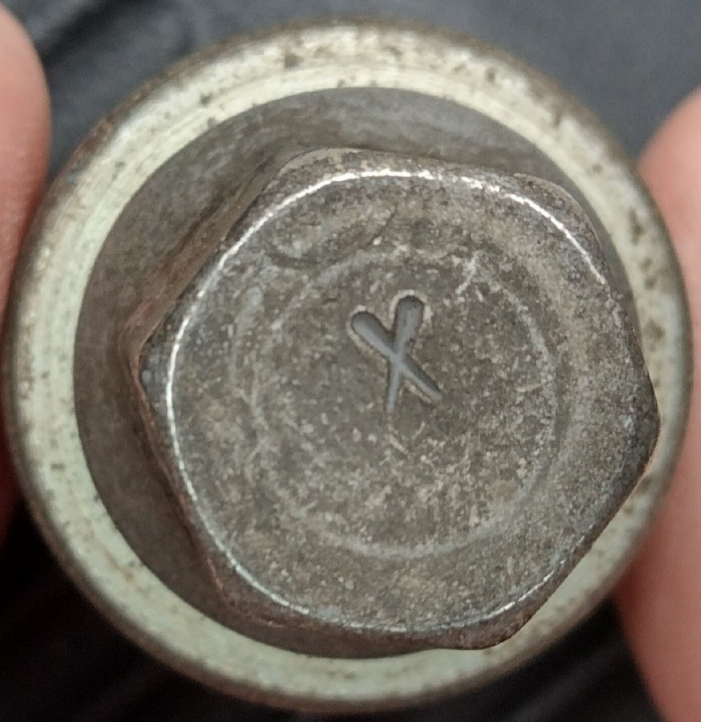

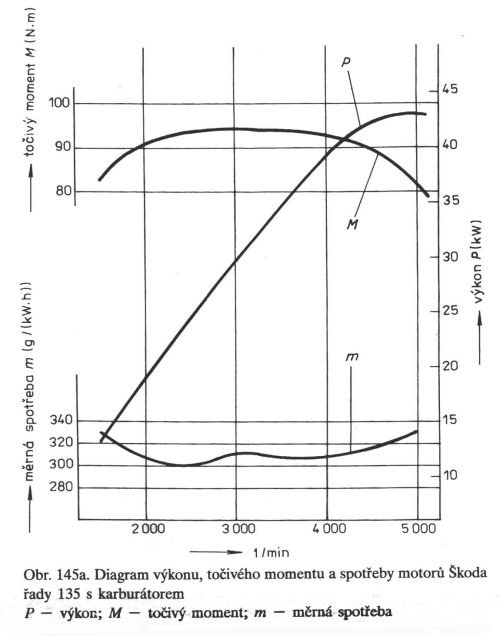

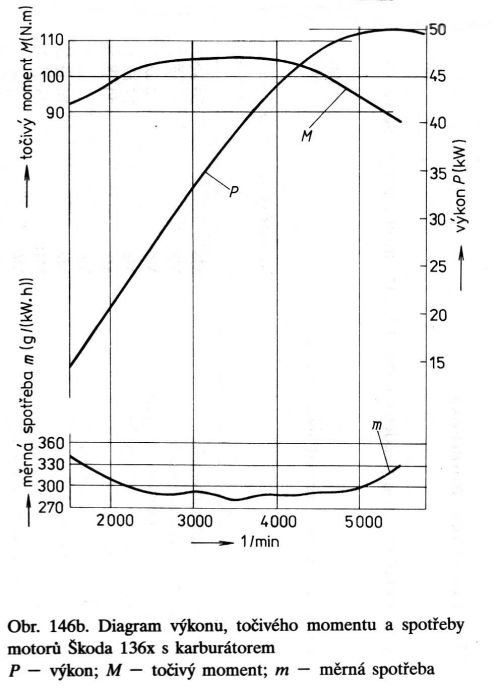



















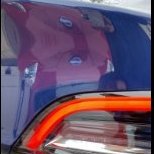




.thumb.jpg.7f7967fb2bfe220b9c418160abc42158.jpg)















